Erik Qualman's Blog, page 657
September 6, 2012
How to Perform a Social Audit [Infographic]

When thinking about social media strategy creation, where should a marketer start? One important component to be included should be a social media audit, where you survey the social landscape to find your customers, industry thought leaders and competitors on social spaces.
Through some analysis, a marketer is able to glean what works and what doesn’t based on the performance of competitor’s pages. By understanding how the audience responds to different types of content and calls-to-action, you can set your own channels up for success at the outsight.
Don’t know how to perform an audit? Don’t worry, we have you covered. Check out our How to Perform a Social Audit infographic below.
We’d love to hear what you think on Twitter.
[image error]
September 4, 2012
5 Good Things To Come Out of the LinkedIn/Twitter Divorce

Twitter has finally severed its connection to LinkedIn. While many people in the social media industry are questioning the move, others seem to be relishing it as Forbes notes.
At one time, the merger had its benefits. But as both sites grew their respective brands, it became apparent that, for all their similarities, the two sites had very few goals in common.
Here are five reasons we’re not mourning the Twitter/LinkedIn divorce:
Anti-Social Media:
Twitter, LinkedIn, Facebook and MySpace are all forms of social media, but that is where the comparison ends. Facebook and MySpace are interactive networks <http://www.socialnomics.net/2012/06/30/what-is-your-social-media-content-saying-about-you/> where everyone can connect on a highly personal (and sometimes professional) level. Twitter is basically a quick, real-time way of letting others know exactly what you are doing at any given moment. LinkedIn, on the other hand, was designed as a network for professionals to communicate, without all of the intimate posts that can sidetrack a productive conversation.
It’s Not Personal:
LinkedIn is a professional form of social media. People who want to showcase their talents, or put their name out to others in their chosen field, view the site as a forum for like-minded individuals — not tweet-crazy people who post every moment’s action on the internet. Many people tend to forget that their personal and professional lives begin to intertwine once they connect all of their online accounts. The LinkedIn/Twitter divorce eliminates that worry. No more will professionals looking to network be exposed to Aunt Millie’s bathroom antics. Companies, from bakeries and retail shops to web hosting sites and software makers, may soon find their once-daily tweets ineffective, as more of their followers migrate over to LinkedIn to avoid dealing with too-personal posts.
Post Haste:
The main purpose behind LinkedIn was to establish a network of interaction between professionals. This can usually be accomplished with one or two well-placed posts throughout the day. According to Forbes writer Eve Mayer Orsburne, it takes up to eight daily tweets for a person to remain publicly visible to his or her peers on Twitter. Of course, much of what is being thrown out there on Twitter has little to do with business, anyway.
Unnecessary Information:
Even though the age difference between the average Twitter and LinkedIn users is moderate (approximately seven years), the amount of unnecessary information generated on Twitter is comparable to the daily texting routine of a teenager. Most people who post on LinkedIn do so to relay business information and encourage professional communication. Twitter, on the other hand, dispenses details about personal activities that many readers could do without.
Stricter Control:
Twitter tightened the reins of how third-party developers can use their application programming interface <http://instagram.com/developer/> (API). This tasked many application designers with finding creative ways to remain on Twitter’s coattails. It’s not clear as to how this will be accomplished. Some may choose to purchase Twitter affiliation rights, while others will design applications that comply with Twitter’s standards. Either way, Twitter is slowly regaining control of how it is used. By assuming stricter controls, the social media giant is drawing traffic back, instead of dispersing it throughout the web.
With all of this being said, is Twitter’s divorce from LinkedIn a good thing? Most professionals will agree, it’s time to get back to business.
[image error]
McKinsey Weighs In on the Future of the Social Economy

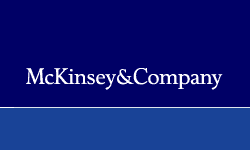 Despite the popularity of social media with businesses, new research from McKinsey suggests that businesses are leaving value on the table, to the tune of billions of potential dollars. When McKinsey released new research this July on the changing face of the social economy dubbed ‘The social economy: Unlocking value and productivity through social technologies’, we eagerly devoured it. We present some of the key takeaways from the report below:
Despite the popularity of social media with businesses, new research from McKinsey suggests that businesses are leaving value on the table, to the tune of billions of potential dollars. When McKinsey released new research this July on the changing face of the social economy dubbed ‘The social economy: Unlocking value and productivity through social technologies’, we eagerly devoured it. We present some of the key takeaways from the report below:
Adoption and Benefits
The report revealed fascinating figures around social media adoption and business benefits realized. Consumers have adopted social technologies, defined as products and services that enable social interactions in the digital realm, at an unprecedented speed and scale. In fact, social technologies have been adopted at a faster rate than any other media technology. While it took commercial television 13 years to reach 50 million households and Internet service providers three years to sign 50 million subscribers, it took Facebook just a year to hit 50 million users and Twitter – a total of nine months.
However, while 70% of companies use social technologies, only 3% report deriving substantial benefit from this usage across all stakeholders – customers, employees, and business partners. More broadly, 90% of those companies who use social technologies report some business benefit from them. It’s clear here that businesses can better leverage social technologies to drive more value from their investments.
Influence on Social Commerce
McKinsey reports that up to 1/3 of consumer spending is subject to influence from social shopping. This growth indicates the almost primal appeal of social technologies, which bring speed, scale, and economics of the Internet to social interactions. Consumers can now rapidly search for, find and compare various offerings for their needs. Combine that information transparency with the ability to garner peer feedback on potential purchases and you develop a very attractive market for online shopping.
Economic Impact of Social Technologies: $900 Billion to $1.3 Trillion
McKinsey identified ten specific ways where social technologies can add value to businesses. These value-added levers include:
Product development – Use social technologies to derive customer insights and co-create product
Marketing and sales – Use social technologies to derive customer insights; for marketing communications and interactions; to generate and foster sales leads; social commerce
Customer service – Use social technologies to provide customer care
McKinsey estimates that the use of social technologies can contribute $900 billion to $1.3 trillion in value (based on estimates across four industry sectors), with $500 billion added from marketing, sales and after-sales support activities. Specifically, consumer goods companies, with their dependence on brand recognition, can use social technologies across all value chain steps to recognize margin increases of as much as 60%. McKinsey cautions that simply shifting advertising and consumer insights budgets to social media will not suffice; advocating instead for well-planned and well-executed programs which incorporate non-social components such as mass media to capture the potential value of social technologies.
Truly capturing the business value will be a challenge for most enterprises, as they will have to transform their organizational structures, processes, and cultures to become “extended networked enterprises.” Extended networked enterprises connect both internally as well as externally with customers and partners. For these technologies to deliver value, enterprises must embrace information sharing and create cultures of trust and cooperation.
Business Opportunities
The McKinsey study also highlights areas in which business can use social technologies to improve. For instance, many companies have found these social technologies can generate rich consumer insights cheaper and faster than traditional methods. Companies are tapping into what consumers do and say to one another on social platforms, gathering unfiltered feedback and behavioral data (e.g. do people who like this movie like that brand of soft drink?).
Additionally, leveraging of social platforms provides the potential to tap the great “cognitive surplus” of society by using leisure time for creating content and collaboration, rather than consuming. McKinsey refers to the growth of self-publishers and video creators, who add their own content to the social sphere.
Beyond 2012
As we move beyond 2012, we expect to see companies further leveraging emerging social technologies to drive distinct and measureable business value. We believe marketers will use social marketing to identify new prospects based on sophisticated monitoring, profile collection and social scoring.
What do you think? How will your company and industry approach social to drive increased value in the years ahead? Tell us on Twitter.
Mike Lewis
[image error]
August 31, 2012
5 Qualities of a Great Social Media Manager

Originally posted on the Likeable blog
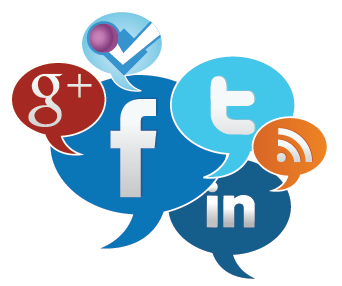 If you stay up to date on the latest trends in social media, I’m sure you’ve read Cathryn Sloane‘s article on NextGen, Why Every Social Media Manager Should be Under 25. Cathryn argues that since “under 25ers” were teenagers when social media exploded (aka when Facebook started), they have a superior understanding of social and are therefore, most qualified for social media positions. Needless to say, this strong opinion was not so well received by many social media professionals. Whether you agree or disagree, I’m here to argue that the age of your social media manager is insignificant: Your social media manager needs to be not only the voice of your brand, but someone who accurately represents your brand’s core values and has an understanding of the company’s overarching strategy. When hiring your social media manager (or any type of social media position), here are a few things you should look for (besides age):
If you stay up to date on the latest trends in social media, I’m sure you’ve read Cathryn Sloane‘s article on NextGen, Why Every Social Media Manager Should be Under 25. Cathryn argues that since “under 25ers” were teenagers when social media exploded (aka when Facebook started), they have a superior understanding of social and are therefore, most qualified for social media positions. Needless to say, this strong opinion was not so well received by many social media professionals. Whether you agree or disagree, I’m here to argue that the age of your social media manager is insignificant: Your social media manager needs to be not only the voice of your brand, but someone who accurately represents your brand’s core values and has an understanding of the company’s overarching strategy. When hiring your social media manager (or any type of social media position), here are a few things you should look for (besides age):
1) Knowledge of major social platforms: Although there are definitely a few points Cathryn made that can be disputed, she did touch on one very important point: your social media manager needs to understand the major social platforms (or, at the very least, have the ability to learn the platforms quickly). Part of understanding social is understanding the platforms and how they can be most effectively used to benefit your brand.
2) An understanding of how people work: Social media is not a broadcasting tool: It’s a way for brands to tap into people’s natural socializing processes. In order to do this, your social media manager must understand your consumers’ typical behavior patterns, including how they communicate with one another and interact with brands they support.
3) An understanding of how business works: Understanding social media is great, but it means nothing if these efforts aren’t providing any value to your business. What are you paying your social media manager for? What results can you show? Your social strategy should tie into the brand’s overarching business strategy. It is essential for your social media manager to understand your company’s challenges and goals so that he/she can build your social strategy around that.
4) The capacity and eagerness to learn: Social media is an industry that is constantly changing. Regardless of the amount of experience your social media manager has, the willingness to learn is one trait that cannot be overlooked. This person must be willing to stay on top of changes on current social platforms in addition to staying up to date on emerging platforms that will be a good fit for your brand. Your social media manager must also be able to determine if your current social strategy is benefiting your business and identify challenges on a regular basis.
5) Adaptability: Since social media changes every day, your social media manager must not only stay up to date on all of the changes, but also be willing and able to alter your social strategy accordingly. Making sudden changes to a plan is never easy but in this industry, it is essential. It is important for your social media manager to be driven by the success of your brand, which often means re-evaluating tactics when new opportunities emerge.
What do you look for in a social media manager?
[image error]
Mr. CEO, Your Three Steps For Social Media Success

 Steve Jobs recently reminded me how important it is to “think different” in your business model… in his biography I just finished reading. We hear the proverbial “think outside the box” phrase in nearly every company sales meeting, but why isn’t that phrase put into practice when it comes to social media? The purpose of this month’s issue is to provide a concrete strategy as well as some tactics you can implement immediately to begin leveraging the power and reach of social media in your business model.
Steve Jobs recently reminded me how important it is to “think different” in your business model… in his biography I just finished reading. We hear the proverbial “think outside the box” phrase in nearly every company sales meeting, but why isn’t that phrase put into practice when it comes to social media? The purpose of this month’s issue is to provide a concrete strategy as well as some tactics you can implement immediately to begin leveraging the power and reach of social media in your business model.
First: Offer valuable content through a variety of social media channels to your three biggest champions – customers, employees 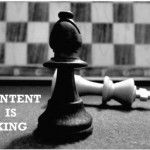 and media outlets. They can deliver your message, your story, your “secret sauce” to a larger and more diverse audience than you can. Let’s talk “content.” The sky’s the limit. Be creative. For your customers it could include how-to videos, statistical data or other information that is useful to them. Ask them what they’d like to see your company provide on a regular basis via social media.
and media outlets. They can deliver your message, your story, your “secret sauce” to a larger and more diverse audience than you can. Let’s talk “content.” The sky’s the limit. Be creative. For your customers it could include how-to videos, statistical data or other information that is useful to them. Ask them what they’d like to see your company provide on a regular basis via social media.
 For your employees, do the same. Ask them what they’d like to see. It could be inspirational videos, a contest offering for the best [fill in the blank] or share an employee success story. And please, go beyond offering training videos and FAQs online. Make it entertaining. Make it humorous! Just be real. For example, interview them and ask them who’s the most influential person in their life and why, then post it (with their permission of course). Make your internal social media strategy all about them. They each have a story to tell and sharing those stories with other employees creates new friendships, a strong bond within the team and ultimately creates a loyalty to your organization because it shows have an interest in them.
For your employees, do the same. Ask them what they’d like to see. It could be inspirational videos, a contest offering for the best [fill in the blank] or share an employee success story. And please, go beyond offering training videos and FAQs online. Make it entertaining. Make it humorous! Just be real. For example, interview them and ask them who’s the most influential person in their life and why, then post it (with their permission of course). Make your internal social media strategy all about them. They each have a story to tell and sharing those stories with other employees creates new friendships, a strong bond within the team and ultimately creates a loyalty to your organization because it shows have an interest in them.
And finally, make a strategic effort to reach out to your industry trade publications, local business journals or industry bloggers. Engage that audience and provide them interesting information about your company, your customers and your vision for the industry they cover. Give them anything their audience would find valuable, unique, different or compelling.
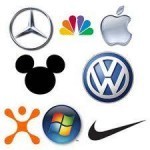 Second: Leverage social media to build your brand. What does that mean? Your company, your products, your service offering, your customers testimonials should be easy to find, online, project a positive image and be a resource for your audience to d
Second: Leverage social media to build your brand. What does that mean? Your company, your products, your service offering, your customers testimonials should be easy to find, online, project a positive image and be a resource for your audience to d

raw from. Use networks like LinkedIn, Facebook, YouTube, Twitter, Flickr and SlideShare to share who you are, what your offer, how you’re different from others in the industry and why your company matters. This boils down to being active on these networks by posting, commenting, asking questions, polling and engaging your audience on a consistent basis. Dedicate an employee (or two) to write a weekly or monthly blog. Create a behind the scenes video and post it to YouTube and Facebook. Create a presentation and post it on Slideshare. Upload interesting pictures of your most recent trade show, company outing or product launch. Let people see what’s going on with your company, literally.
 Third: Social Media can grow your business. How? LinkedIn is a great place to start. Use their advance search capabilities to prospect for new customers by title, industry and geographic location. Generate leads and referrals by exporting your LinkedIn contacts into an Excel spreadsheet and do a mail merge that will reach your entire circle of influence. Offer recommendations and ask for referrals. If everyone on your senior leadership team and/or other employees conducts this exercise, you might be surprised how quickly you find referral business. What about using these social networks to gather competitive intelligence? What is your competition doing online? Are they using social media and if so, what kind of response from their customers do you see? The information is out there. A little investigative research can go a long way. Acquiring “talent” and finding good people to join your organization are things every company is interested in doing. Twitter is a great tool for talent acquisition. In fact, if you’re looking for someone who can lead your social media efforts, Twitter is a great way to find that person(s). Generally speaking, they have a passion for social media, they are technology savvy and they are easy to find quickly.
Third: Social Media can grow your business. How? LinkedIn is a great place to start. Use their advance search capabilities to prospect for new customers by title, industry and geographic location. Generate leads and referrals by exporting your LinkedIn contacts into an Excel spreadsheet and do a mail merge that will reach your entire circle of influence. Offer recommendations and ask for referrals. If everyone on your senior leadership team and/or other employees conducts this exercise, you might be surprised how quickly you find referral business. What about using these social networks to gather competitive intelligence? What is your competition doing online? Are they using social media and if so, what kind of response from their customers do you see? The information is out there. A little investigative research can go a long way. Acquiring “talent” and finding good people to join your organization are things every company is interested in doing. Twitter is a great tool for talent acquisition. In fact, if you’re looking for someone who can lead your social media efforts, Twitter is a great way to find that person(s). Generally speaking, they have a passion for social media, they are technology savvy and they are easy to find quickly.
At the end of the day, you’re simply using social media to do what you’re already doing offline and that is offering value, building your brand and 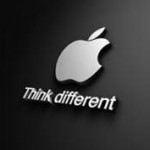 growing your company. It will require some dedicated time, energy and effort and it’s not only worth doing, it’s worth doing really well. The pros far out way the cons, and in 24 or 36 months you’ll start reaping the rewards and wondering why you didn’t initiate this game plan earlier. If companies like Intel, IBM and Dell are finding such success with it, why can’t you? Successful blue prints are all around you. Don’t just mirror the those models, commit to a “think different” mentality and start investing in change today.
growing your company. It will require some dedicated time, energy and effort and it’s not only worth doing, it’s worth doing really well. The pros far out way the cons, and in 24 or 36 months you’ll start reaping the rewards and wondering why you didn’t initiate this game plan earlier. If companies like Intel, IBM and Dell are finding such success with it, why can’t you? Successful blue prints are all around you. Don’t just mirror the those models, commit to a “think different” mentality and start investing in change today.
[image error]
August 30, 2012
Social Prospecting & Scoring: The Missing Link to Social Marketing ROI (Webinar Recap)

Social marketing, at its best, leverages data driven by dialog to achieve business objectives. For example, a running shoe company will monitor social media streams for relevant conversations, engage with those who are training for an upcoming race, and respond in an unobtrusive way when its appropriate. Then, by developing a relationship with these training marathon runners, the running shoe company can become the shoe store of choice when it comes time to buy new running shoes. However, the challenges are finding potential customers that may fall into this category and delivering the right message at the right time. How can a company use marketing intelligence driven from social to target the right customers? We recently hosted a webinar that introduced social scoring, a strategy that, when applied correctly, will help marketers identify and score prospects to generate sales through social.
Market intelligence is at the core of social scoring. We use market intelligence to learn about our about audience (both implicitly and explicitly stated information) which allows us to better target our prospects. The breadcrumbs that people leave on social platforms, including the actions they take and the content they create, provide deep insights that can contribute to sophisticated segmentation and targeting, created based on a prospect’s individual interactions.
How do you mine all this data to find tiny insights?
To comb through all social data would be a highly overwhelming exercise. To narrow the big data analysis down to a reasonable fashion, marketers can take three steps to find their ideal prospects, customers, influencers and others.
Marketers should use:
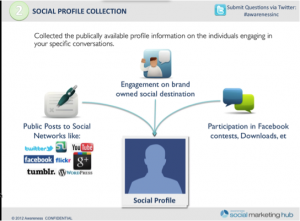 1. Social Prospecting – Targeted listening across the web, focused on specific relevant or intent-based keywords.
1. Social Prospecting – Targeted listening across the web, focused on specific relevant or intent-based keywords.
2. Social Profile Collection – Aggregation of user information on various social networks (like posts) engagement on brand-owned social destinations, and user behavior, like participation on social platforms to create a rich prospect profile. Marketers should be listening for people, not posts.
3. Social Scoring – Create custom scoring based on key levers to your business. Apply a dynamic methodology to it.
Doing Social Scoring Right
To do social scoring right, you’ll need to make sense of the volume of data you’ve collected. Social scoring helps you put it all together and leverage your data.
To do it right:
Define a path to purchase – Understand the steps your customers take on their journey to purchase. What leads people to buy your products?
Build a behavioral score model – Apply weights to specific behaviors that indicate intent to purchase. Make this your own – the custom scores can be broad or specific. Marketers can create multiple buckets to reflect different segments (likely buyers, brand advocates, influencers, prospective customers, etc).
Combine this with traditional marketing data – Add this social data to what you’re already tracking around web site visits to create a full, holistic picture of your customers and prospects.
Remember it’s a dynamic process – Companies often go through a trial-and-error process where they find they’ve made their rules too stringent or too lenient. Scores should be time-based and change as often as daily.

We know this may represent a new framework for approaching social marketing. Here are the top questions asked in the webinar.
How do you access this data on private networks or when email addresses aren’t readily available?
It’s based on publicly collected and available data. Often, consumers opt-in to data collection when participating in an online campaign or contest. All private and personal preferences and settings are honored.
What level of resources is required to do this well? Can you do it alone?
To make this a reality, a lot of things need to work in concert. It’d be tricky to set this up without sophisticated tools. A software tool will automate a lot of this process, manage the monitoring and data collection as well as apply the scoring rules.
How do Social Prospecting and Social Scoring apply to business-to-business (B2B) companies?
B2B companies can, just like B2C, integrate prospect and scoring data with CRMs and Marketing Automation systems. B2B companies can monitor for words and phrases that signify purchase intent. Then, they can engage with these prospects on social, bubble up sales leads and, when appropriate, share them with sales people so they can directly reach out.
How is social scoring related to existing marketing automation systems? Should you add social scoring if you aren’t using regular lead scoring? Or if you don’t think it’s right?
Social automation is built on the premise that you know who they are. You may track them until they take an action. In social, we are talking about interactions that are happening above the funnel. People are engaging in conversation relative to your brand. The consumers might not even know your brand exists. Social scoring and traditional scoring are different because you aren’t 100% you know who they are. The goal of social scoring is to create engagement.
How can you use social scoring to tackle gaining executive buy-in of social marketing?
Executives want to know that social is producing results in line with their leading business objectives, whether it’s more awareness, sales, or thought leadership. Marketers can now bring in quantifiable data, new leads and reduced sales cycle. With this data, you can elevate the conversation and apply a different framework.
Marketers can now use social scoring to close the loop on social ROI. For even more insights on the strategy behind social scoring or to learn how to get started, check out our webinar, Social Scoring: The Missing Link to Social Marketing ROI.
[image error]
August 28, 2012
5 alternatives to Instagram and add-ons to the photo sharing app

Instagram has been “downloaded like hotcakes” since it became available in late 2010 (now for both iphone and android interfaces). The perfect mix of a photo sharing app and social network for those visual fanatics. Currently with over 80 million users, it is still showing Facebook (who purchased it earlier this year) that the purchase was worthwhile and fans are not tinkering off anytime soon.
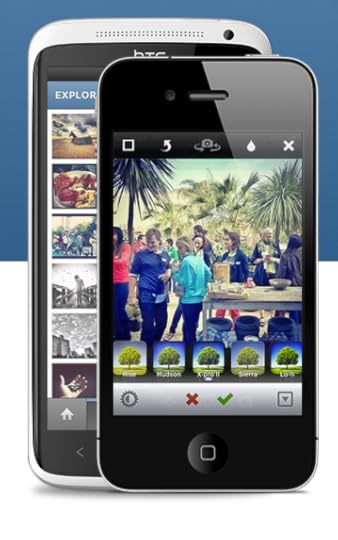
New in Instagram: The photo map which allows users to “opt-in” and then add their photos to the visual mpa where photos are geo-tagged.
However the “instagrams” of the world are popping up all over the place…Now there are new apps which connect to instagram to make filtering more fun, frames for your pictures, ability to combine photos in one one frame, and more. Here are a few of the newbies out there in the mobile space:
1) Hipstamatic:
Still an iphone solo app – but has the Instagram feel of an old Kodak camera, down to the viewfinder and all. Although it’s not free, it does allow you to upload pictures to instagram and integrates easily. In my opinion it’s fun for the older camera feel even when you’re doing it via iPhone.
2) Pic You
Known as the Instagram alternative, is very similar to Instagram in the look, feel, and filter appeal. Also lets you share with friends on Facebook and Twitter instantly. Although it doesn’t appear to have instant shares to Tumblr (as far as I’ve seen and read so far) it does have a web interface which is easy to use for those who like to upload via their computers.
3) InstaAlbum
An app which integrates with instagram to help users sort and share photos with ease via album, map, etc. The item that I saw that was intriguing about this one is that you can easily upload to Dropbox for saving. Back that pic up!
4) PicFrame
Combine your photos from your photo album from your Instagram album or others – combine them fun frames, and then automatically share to your social networks. Including Tumblr (win!) I love how easy it is to use and upload in minutes…
5) Camera+
An app that has more camera features to make you feel like you’re using a real camera with a touch exposure and focus. It even includes a stabilizer to steady your iPhone from your shaky hands. Although I still managed to feel inferior because I’m still an amateur photographer – it was fun to play with.
Personally I switch around on my apps and like to play with different ones, but in the end I am more faithful to Instagram. Which Photo app do you use? And why?
[image error]
3 Shocking Social Media Stats That Will Amp Up Your Marketing

We recently uncovered some seriously shocking social media statistics – take this one for instance – it’s said that more than 600 million people who own a mobile phone don’t own a toothbrush. Crazy, right? Beyond ‘shock-value,’ these stats lead to targeted, insightful lessons that marketers can apply to their own business strategy. At their core, these statistics speak to the potential that social marketing holds. We’ll share 3 stats below and their implications for marketers. For even more stats and marketing implications, pick up our newest whitepaper, 6 Mind-Blowing Social Media Stats (And What They Mean for Marketers).
 1. Nielsen
estimates
that social media and blogs reach 80% of all active US Internet users (of which there are 245 million).
1. Nielsen
estimates
that social media and blogs reach 80% of all active US Internet users (of which there are 245 million).
If you’re not there, you’re missing out on plenty of potential opportunities to increase brand awareness, identify prospects and strengthen relationships with existing customers. The vastness of that statistic indicates that if you aren’t on social media or actively blogging, your competitors probably are, forging relationships that could be yours.
Leverage the Stat:
1. Locate your prospects: Perform a social audit to find out where your customers and prospects spend their time online.
2. Secure channels: If you haven’t already done so, secure your place on social media channels and start a blog. Fill out each profile completely to answer the basic questions your audience may have: who are you, what are you about and how can they contact you.
3. Develop a content strategy and content: What themes will you own? What non-promotional content will you share with your audience? Develop engaging, relevant content themes that support your brand.
2. One in every seven minutes spent online is spent on Facebook.
A similar implication as stat #1: that’s a tremendous amount of time spent on Facebook. Other sources confirm the average Facebook visit is 20 minutes per user. The takeaway is clear: Facebook welcomes a large and engaged audience. For marketers, this represents a prime opportunity to share your message with visitors, possibly with more people per day than visit your own site. To properly capitalize on this opportunity, brands need to have a high EdgeRank, coupled with high quality content. For more on EdgeRank, check out our paper EdgeRank: Stop Worrying About It and Love Your Content.
Leverage the Stat :
1. Post one to two times daily – The half-life of a Facebook post is 18 hours, so limit your posting to one to two times per day. More than that may actually decrease engagement.
2. Include media – Adding a photo and video to posts increases the life of content by 16% and 9% respectively. Always support posts with a photo (or a video, if possible).
3. Encourage sharing – Feature clear calls-to-action on your posts. If you want to expand your social reach, invite your followers to share the content with their friends.
3. 91% of experienced social marketers see improved website traffic due to social media campaigns and 79% are generating more quality leads.
That’s the ideal scenario – social marketing as a driver of increased website traffic and leads. It may not happen overnight, but by investing in the proper resources and research, brands can improve and optimize their social marketing performance.
Leverage the Stat :
1. Learn from the best: Study the leader in your industry and category. How are they leveraging social to drive growth? Analyze and apply best practices gleaned from studying the category leaders. (To get started, check out what top social brands like Whole Foods and Farmers Insurance are doing in our paper Social Success Stories: Marketing Lessons from Industry Leaders).
2. Join the conversation: Find discussions that are relevant to your brand and offerings. Publish content that will tap into their passions. Take it from the owner of Foiled Cupcakes, who recruited 94% of her clientele by making connections on Twitter.
3. Interact creatively with your fans and followers: Provide an incentive to sign up for an email newsletter or run a contest asking for photo submissions of customers using your product. Feature winners on your Facebook Cover Photo, website and/or Twitter background.
Don’t forget to check out our newest whitepaper, 6 Mind-Blowing Social Media Stats (And What They Mean for Marketers) for even more amazing social marketing stats. Have any shocking social media statistics changed your marketing strategy? Will you apply the lessons learned in this post? Tell us at @awarenessinc.
[image error]
August 27, 2012
A Brave New Era of Online Travel
August 23, 2012
Introduction to Social Marketing Automation [Infographic]
[image error]
In our newest infographic, we define Social Marketing Automation and provide various use cases for marketers to explore. Marketers can use Social Marketing Automation to identify brand advocates, customers who are ripe for an upsell, and prospective customers. Learn more about Social Marketing Automation in our new white paper Social Prospecting & Scoring: A Disruptive Process to Identify Leads, Generate Demand and Target Influencers.
Share your feedback!
Marketers can leverage Social Marketing Automation to greatly improve their marketing efforts. Do you currently use it? Will you move to a similar model? Share your insights with us and our community on Twitter.
Mike Lewis
[image error]








